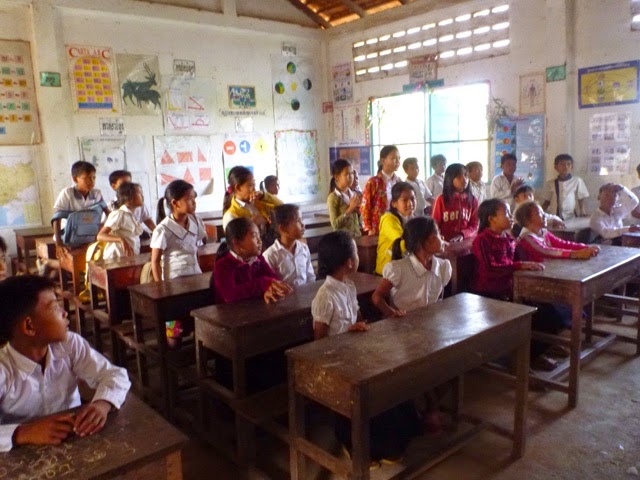Saigon or Ho Chi Minh City as the government now calls it is home to over 10 million people and some estimate that it is growing at a rate of over 10 percent annually. Apparently there are 7 million motorbikes in the city and it seems like they are all out everyday. The traffic is crazy and it would appear that the lines on the road are for decoration only as cars, buses and motor bikes weave all over the place. If a bike cannot find a clearing in the traffic they just go up on the sidewalk making walking interesting. To further complicate walking the sidewalks are where all the bikes are parked so you are darting bikes one way or the other.
This city is certainly one of sharp contrasts. Beautiful new buildings sit beside old run down ones and while the streets outside hotels and patrolled buildings are kept clear everywhere else the residents use the sidewalks as their kitchens and meeting place. Very different from home to see whole groups of people sitting on small plastic chairs enjoying their meals. Though an improvement from Hanoi the smog is still ever present here as well. Certainly makes us appreciate the fresh air of home.
We visited the palace, a very old temple as well as he crazy central market but the highlight of our time in Saigon was our tour to the Cu Chi tunnels.
Used by the Vietminh and the Vietcong in their wars against the French and the Americans these tunnels were excavated between 1948 and 1973 and cover a distance of 250 kms. The maze of tunnels lead to chambers that served as kitchens, dormitories and even hospital rooms. The ground above was densely booby trapped to protect against the enemy. The enemy was literally walking above the Vietnamese unknowingly. These were brilliant hiding places to protect locals during war time. Touring just a small portion of the tunnels I cannot begin to imagine what it must have been like to live in this underground world with little light and fresh air.
Looking back on this amazing trip we realize how much we have seen and learned and are very great full to have had this opportunity. We look forward to home but it has been wonderful to meet so many warm and welcoming people and to learn of their culture. Travel is such a gift.
Sidewalk parking lot
View of Saigon from our room
Central market with vendors eating their lunch
The street scenePortable restaurants everywhere
Waiting for business A hiding hole for the Vietcong
Gruesome booby traps
Not a welcoming step
Ventilation holes disguised as termite mounds
Crawling through the tunnel
Underground dining hall
Vying for position
Enjoying a cocktail on the 23rd floor






























































